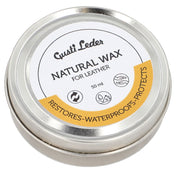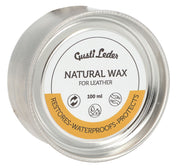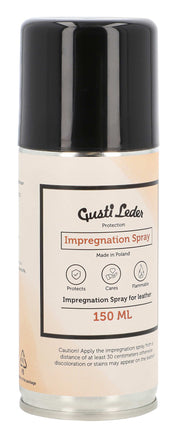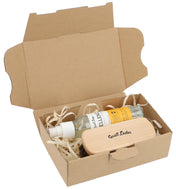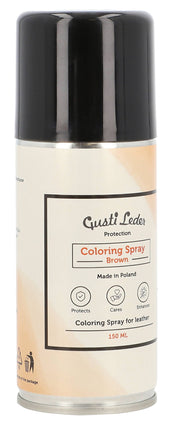Leather is generally a very delicate material, so only gentle treatment is recommended. However, the type of leather also plays a role. We'll explain how to clean leather properly and what to look out for.
Cleaning smooth leather: goatskin and cowhide
- Before you start cleaning, remove any coarse dirt from the leather.
- Then moisten a soft cloth with distilled water and wipe the affected area of the leather.
Why distilled water? - So you don't get limescale on your leather! - Important: Avoid soaking the smooth leather, then try to dab off any remaining dirt with a damp cloth (do not rub).
- If this does not work because the stains are too stubborn, use a leather cleaner for smooth leather from a specialist retailer or drugstore.
→ Alternatively, you can dissolve some hair shampoo in lukewarm, distilled water to remove stubborn stains - In general, you should not clean the leather over a large area. It is better to work in stages and let the parts you have treated dry first before moving on to the next sections.
- Once the leather has been cleaned, it must be dried thoroughly before being used again.
- Once the leather is dry, you should treat it with a conditioner. You can use either a special leather conditioner or beeswax. After cleaning, you can treat the leather with a waterproofing spray to protect it from water stains.

Cleaning smooth leather: Buffalo leather
- Buffalo leather has an open-pored structure, so liquids can easily penetrate, especially if they are rubbed onto the surface.
→ this leads to darkening of the leather and stains. - New buffalo leather should be impregnated for protection and cared for as needed with products designed to protect aniline leather.
- Important: Please do not use leather grease as this will cause grease stains.
- If impurities occur, they should not be rubbed off, as this will otherwise lead to unsightly darkening and stains on the leather, as described
→ instead a leather sanding pad should be used - Stains that are not caused by water but by grease can be removed with leather cleaning spirit, which is specially suitable for leather, or grease-removing sprays for leather.

Application of cleaning spirit on leather
Always check all products for changes in an inconspicuous area first!
Lightly moisten a clean, soft, white cloth with leather cleaning solvent and wipe over the greasy areas. Especially with open leather (suede, aniline leather, etc.), only briefly brush the cloth over the leather to avoid leaving marks and stains during the cleaning process. Always allow the leather to dry first. Not all greasy spots can be completely removed. It's better to give up early and seek professional advice. After cleaning with leather cleaning solvent, the leather must be re-protected with a care product.
Application of grease dissolving spray
Test the spray on a hidden area to determine compatibility. Spray greasy stains thinly and extensively (from seam to seam). Allow the spray to work well. Once the area is completely dry, wipe off the product. Repeat the process if necessary. After cleaning, treat the leather with a conditioner.
Application of the leather sanding pad (dry cleaning)
Carefully move the sanding pad in a circular motion over the leather, avoiding scoring and deep scratches. Both sides of the sanding pad can be used. The sanding pad can be rinsed with water.


